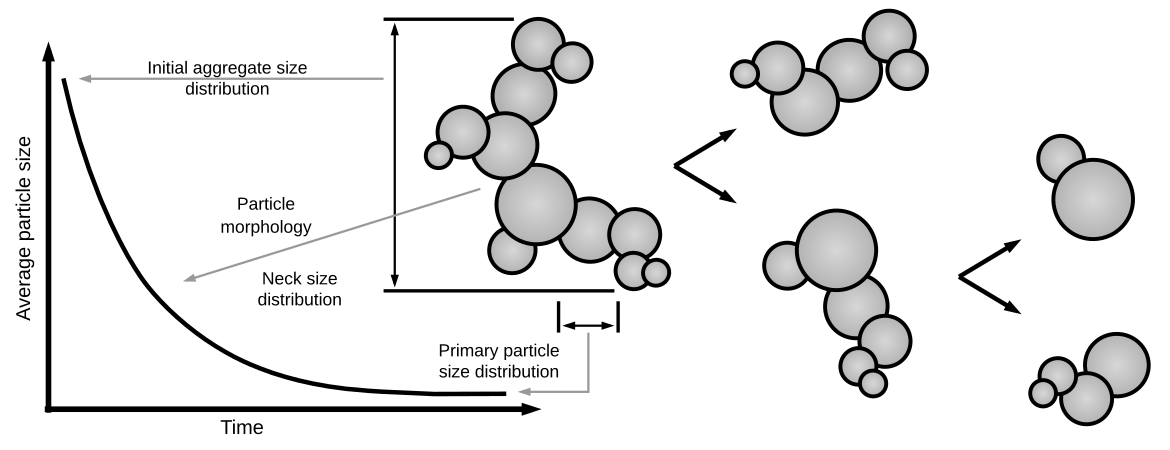Technical Report 177, c4e-Preprint Series, Cambridge
On the milling behaviour of flame synthesised titania particles
Reference: Technical Report 177, c4e-Preprint Series, Cambridge, 2016
- A laboratory-scale hot wall titania reactor is simulated using a detailed population balance model.
- Breakage models are developed, utilising morphological data captured by the detailed particle model.
- The breakage models are used to relate reactor conditions to the milling behaviour of the synthesised titania particles.
 A detailed population balance model is used to relate the reactor conditions of flame synthesised titanium dioxide particles to their milling behaviour. Breakage models are developed that utilise morphological data captured by a detailed particle model to relate the structure of aggregate particles to their size-reduction behaviour in the post-synthesis milling process. Simulations of a laboratory-scale hot wall reactor are consistent with experimental data and milling curves predicted by the breakage models exhibit features consistent with experimental observations. The selected breakage model considers the overall fractal structure of the aggregate particles as well as the neck size between neighbouring primary particles. Application of the model to particles produced under different reactor residence times and temperatures demonstrates that the model can be used to relate reactor conditions to the milling performance of titanium dioxide particles.
A detailed population balance model is used to relate the reactor conditions of flame synthesised titanium dioxide particles to their milling behaviour. Breakage models are developed that utilise morphological data captured by a detailed particle model to relate the structure of aggregate particles to their size-reduction behaviour in the post-synthesis milling process. Simulations of a laboratory-scale hot wall reactor are consistent with experimental data and milling curves predicted by the breakage models exhibit features consistent with experimental observations. The selected breakage model considers the overall fractal structure of the aggregate particles as well as the neck size between neighbouring primary particles. Application of the model to particles produced under different reactor residence times and temperatures demonstrates that the model can be used to relate reactor conditions to the milling performance of titanium dioxide particles.
Material from this preprint has been published in Chemical Engineering Science.
PDF (1.3 MB)



